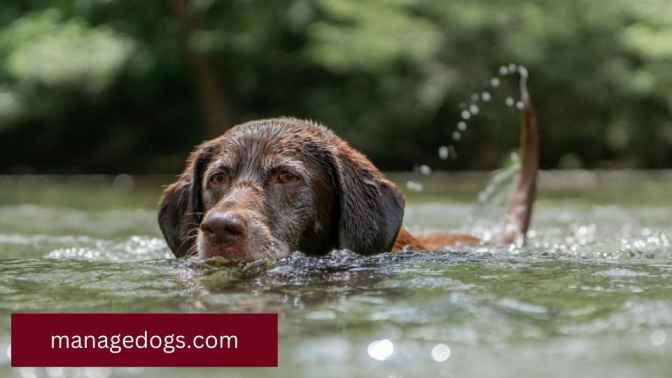what does it mean when an older dog starts drinking a lot of water?
A good diet and fresh water are the most important food ingredients to guarantee good health for the dog. But what’s their scale? Most of us know about the diet requirement, usually 2-3 meals a day, but we don’t know what’s the reasonable scale of water for the dogs.
Well! A dog usually requires between 50ml to 75ml per kilogram for any dog. Anything above that scale cannot be considered normal. Kidney failure, excessive vitamin D intake, diarrhea, change of diet, and hot weather cause the dogs to become dehydrated very soon. Let’s discuss each aspect in the detail:

Reasons for Excessive Water Drinking
Polyuria and Polydipsia Are Common Issues
Firstly, your dog may be drinking a lot of water, even after thirst is exhausted, due to polyuria and polydipsia. But what are they? The issue occurs when the kidneys of the dog make a lot of dilute urine. So, when there is a serious imbalance in the urine, then your dog will drink more to fill in water deficiency.
It has been seen in most cases that over-drinking and over-urination are not good at all and directly linked with each other. Consult your veteran for the specific treatment before the escalation of the issue.
Thirst After Exercise Due to Warm Weather
Most dogs, like Moyen Poodle and Mini Golden Retriever, are active and energetic and enjoy playing and doing a lot of fun things even in hot summers. When the weather is cold then there is no extra water requirement. However, they become dehydrated very soon with the same activity level in warm or very hot weathers.
When you see your dog with a lot of panting and breathlessness, then it’s to provide them the fresh water. Why? It will normalize their temperature and bring them back to normal senses very quickly.
Change of Diet
Most of the food contains a maximum portion of the water but that’s not always true. You need to give your puppy or the pet a dry kibble or some other food item that contains less water. So, make sure that you provide ample water to your dog when there is an abrupt change in the diet.
Diarrhea or Vomiting by the Dog
Miniature Golden doodle, mini Bernese and Micro Bully are vulnerable to stomach issues such as diarrhea, vomiting, or bloating. In this case, it quickly loses fluid and needs immediate water. You may encounter a similar situation multiple times in a month or so.
First of all, make sure that the health, especially the stomach of your dog remains in good condition. Secondly, make sure that you change the diet of your dog and consult the veteran when the matter becomes more serious. Excessive requirement of water during vomiting is a very common thing for humans as well as dogs.

Medicines Side Effects
There is a possibility that your amazing dog is requesting you to provide more water due to the side effects of various medicines. That’s the reason that doctors ask humans to take some medicines with milk to counter dehydration. Similarly, you should monitor very carefully and provide sufficient water especially when it’s taking a lot of medicines.
Kidney Failure of the Dog
You should be aware of the fact that the kidney is the most important part for humans as well as dogs. When a kidney doesn’t function properly, then fluid doesn’t remain in the body for long hours and hence, your dog will remain thirsty.
Excessive Insulin Production
During Diabetes Mellitus, the body of the dog is unable to produce sufficient insulin. What happens? The glucose level increases abruptly which is not a good sign at all.
The dog tries to somehow get rid of excessive sugar. But there is a simple and only method to complete that task and that’s excessive urination. So, we know that when there is excessive or uncontrolled urination then there is too much requirement of the water for the dog.
How can you find out that your dog is diabetic? Multiple signs will indicate to you the possibility of diabetes. Here are some visible signs among diabetic dogs:
Impact of Crushing Disease
This happens due to the imbalanced production of the stress hormone cortisol. Puppies and young dogs are almost exempted from the said disease but the grown dogs, from age 7 to 11, fall victim to the said disease.
The most prominent issue is increased thirst. But there are a few more diseases which are as follows:
Said disease can cause damage the health of any dog living on the Earth. But some dogs, like Poodle, Dachshunds, and Boxers get more affected. So, if you own any such breed dog, then beware of the said disease especially when they are above 7 years old.
Ingestion Toxin Role on Excessive Drinking
Most of us, dog lovers, are aware of the fact that over or uncontrolled eating impacts badly on the stomach of the dog. The issue is most relevant for the small size dogs. But there is a possibility of ingestion of the following items which cause immediate dehydration:
One of the major drawbacks is the failure of the kidney. You can imagine very well when the kidney of a dog fails or malfunctions. They can cause polydipsia.
Pyometra For Unspayed Female Dogs
Pymetra is a very common disease among unspayed female dogs. The infection causes malfunction of the kidney which doesn’t keep the fluid and results in excessive urination. Guess what happens next?
The female dog remains unsatisfied even with excessive water. So, it’s a matter of concern. The most obvious signs are pus in the vulva and lethargy.
FAQs
Conclusion
The dogs drink 1 ounce of fresh water per pound in a day. But if they’re asking for more than the routine’s water scale for some days, then it’s a concern. Stomach issues, excessive vomiting, kidney failure, and diabetes are the most common issues. The solution is to regularly monitor the health of your dog, consult the veteran, and ensure complete treatment of the dog until recovery.
